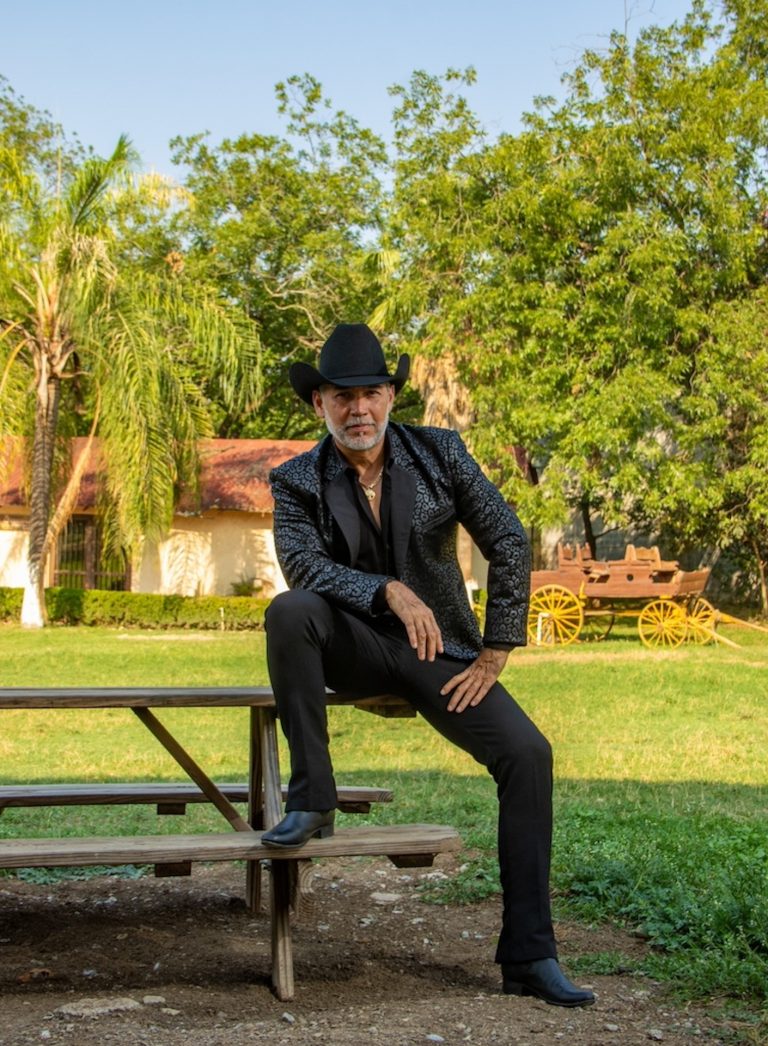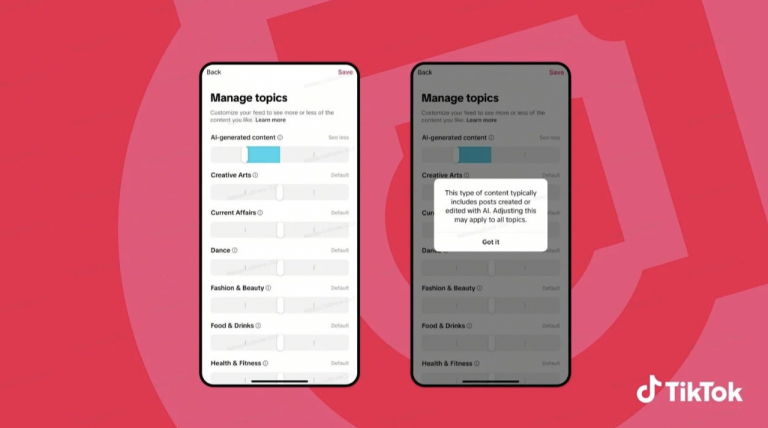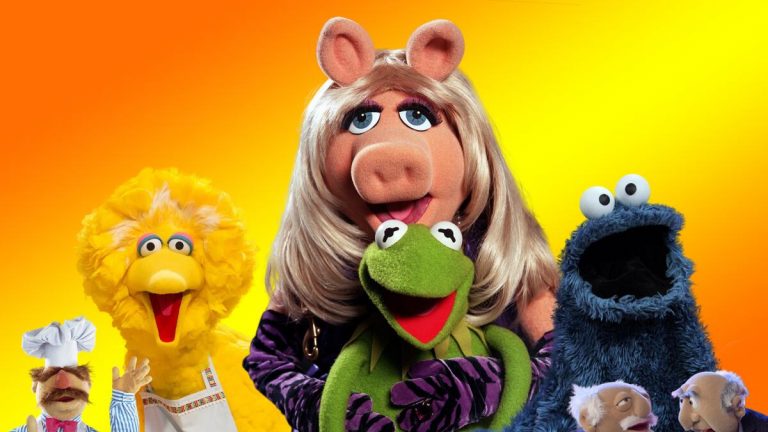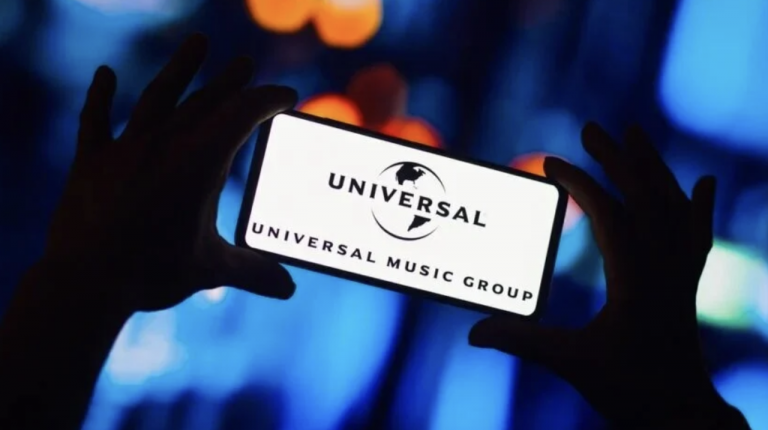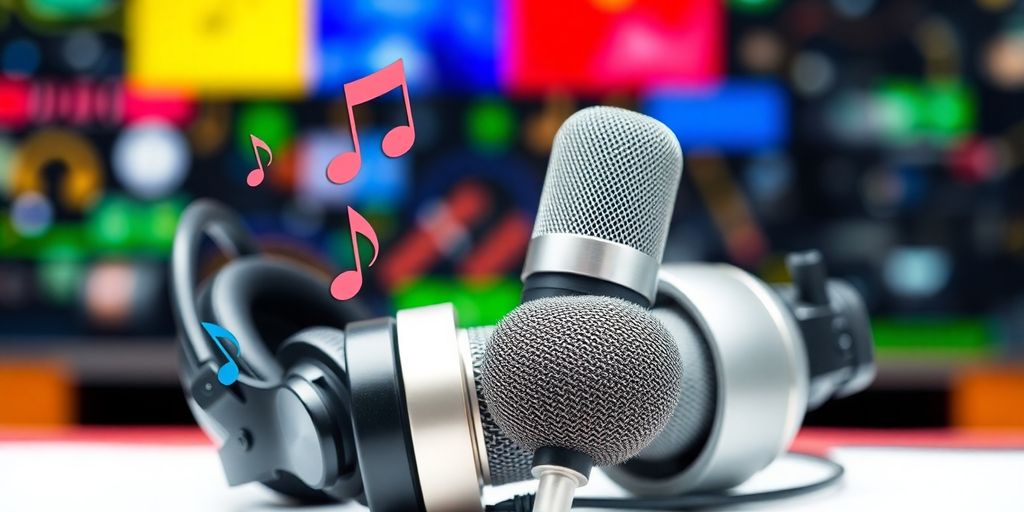
When it comes to news broadcasts, the right music can make a big difference. It sets the mood, engages viewers, and helps convey the story more effectively. But choosing the right music for news isn’t always straightforward. This guide will walk you through the essentials of selecting music that complements your news content, ensuring your broadcasts are both informative and engaging.
Key Takeaways
- Music plays a crucial role in shaping the emotional tone of news stories.
- Selecting the right genre can enhance the viewer’s connection to the content.
- Balancing music volume with narration is key to maintaining clarity.
- Sourcing high-quality music from reliable libraries is essential for professional broadcasts.
- Creating a consistent musical identity helps strengthen your brand in the news landscape.
Understanding The Role Of Music In News Broadcasts

Emotional Impact Of Music
Music has the power to stir emotions, and this is especially true in news broadcasts. It’s not just about filling silence; it’s about subtly influencing how viewers feel about the news being presented. Think about it: a somber piano piece during a story about a tragedy can amplify the sense of loss, while an upbeat track during a story about community achievements can boost feelings of optimism. The right music can make a story more memorable and impactful. It’s important to choose music that complements the story without being manipulative. news programming has evolved to include music.
Setting The Tone For News Stories
Music helps set the tone for a news story, guiding the viewer’s perception. Is the story serious and urgent? Lighthearted and uplifting? The music should reflect that. A fast-paced, driving beat might be perfect for a breaking news segment, while a slower, more reflective piece could be better suited for a feature story. It’s like a director choosing the right lighting for a scene in a movie – it sets the mood and prepares the audience for what’s to come. The goal is to create a cohesive experience where the music and the news work together seamlessly.
Music is a powerful storyteller. It can transport audiences into alternate realities, supporting plot dynamics and settings. Emotive scores can accentuate tension, urgency, or wonder, while recurring themes and motifs can become synonymous with characters or central ideas.
Enhancing Audience Engagement
Music can significantly enhance audience engagement. A well-chosen piece of music can capture the viewer’s attention and keep them tuned in. It can also make the news more relatable and human. However, it’s a delicate balance. The music shouldn’t be so distracting that it takes away from the news itself. It should be subtle and supportive, adding depth and emotion without overpowering the message. Think of it as the background to a conversation – it should enhance the experience, not drown it out. Here are some ways to maximize engagement:
- Use music to highlight key moments.
- Use music for seamless transitions.
- Use music to set the stage.
Identifying The Right Genre For Your News Content
Choosing the right music genre for your news broadcast is more than just picking something that sounds good. It’s about carefully considering how the music will affect your audience and support the story you’re telling. The goal is to find a genre that complements the news content, enhances the emotional impact, and keeps viewers engaged without distracting from the information being presented.
Choosing Between Classical, Jazz, and Pop
These three genres are often considered for news broadcasts, but each has its own strengths and weaknesses:
- Classical: Can add a sense of gravitas and sophistication, suitable for serious or historical news. However, it can also feel stuffy or overly dramatic if not used carefully.
- Jazz: Offers a more relaxed and sophisticated feel, good for human-interest stories or segments with a positive tone. But it can sometimes be perceived as too casual for hard news.
- Pop: Generally avoided for serious news due to its association with entertainment, but instrumental pop or softer subgenres might work for lighter segments or human-interest pieces. It’s important to consider how electronic music genres can impact the overall tone.
Aligning Genre With News Type
The type of news story should heavily influence your genre choice. For example:
- Hard News (Politics, Economics, Crime): Often calls for more serious and understated music, like ambient or minimalist scores. Avoid anything too upbeat or distracting.
- Feature Stories (Human Interest, Lifestyle): Allows for more flexibility. Jazz, acoustic, or even light pop instrumentals can work well.
- Sports News: Upbeat and energetic music is common, but be mindful of the specific sport and the tone of the segment. A somber piece might be more appropriate for a story about an injury.
Using Genre To Reflect Audience Demographics
Consider who is watching your news broadcast. Different demographics may respond differently to various music genres. A younger audience might be more receptive to modern or electronic sounds, while an older audience might prefer classical or jazz. It’s important to strike a balance that appeals to your target demographic without alienating other viewers.
Think about the overall feeling you want to create. Is it a sense of urgency, hope, or reflection? The music should support that feeling. Don’t be afraid to experiment, but always prioritize clarity and avoid anything that could be perceived as insensitive or inappropriate for the news content.
Balancing Music Volume With News Narration
It’s a tricky thing, getting the music volume just right during a news broadcast. Too loud, and you drown out the anchor; too quiet, and it’s like it’s not even there. The goal is to find that sweet spot where the music supports the story without overpowering it. It’s a balancing act, for sure.
Ensuring Vocal Clarity
First and foremost, people need to hear what the news anchor is saying. It sounds obvious, but it’s easy to get caught up in the music and forget that the narration is the most important thing. Think of the music as a supporting character, not the star of the show. If you can’t clearly hear the anchor, the music is too loud. Period. Consider investing in a good microphone to enhance vocal clarity.
Adjusting Levels For Different Segments
Not every news segment is the same. A serious report on the economy will need different music than a lighthearted piece about a local dog show. And the volume levels should reflect that. For heavier stories, you might want the music barely audible, if at all. For lighter stories, you can bring it up a bit, but always keep the vocals front and center. Think about using transitional tunes to gracefully decelerate the momentum.
Using Music As A Background Element
Music in news broadcasts should generally be a background element. It’s there to set the mood, add some emotional depth, and keep things from feeling too sterile. But it shouldn’t be distracting. It’s like the wallpaper in a room – you notice it’s there, but it doesn’t grab all your attention.
Think of music as a subtle layer that adds to the overall experience. It’s not about creating a concert, it’s about enhancing the news. The music should complement the story, not compete with it. If people are focusing more on the music than the news, you’ve missed the mark.
Here’s a simple guide to help you think about music volume:
| Segment Type | Music Volume Level | Notes |
|---|---|---|
| Breaking News | Very Low/None | Focus on urgency and information. |
| Feature Stories | Medium | Allows for more emotional connection. |
| Weather Forecast | Low to Medium | Upbeat but not distracting. |
| Sports Highlights | Medium to High | Energetic and exciting, but still allows for commentary to be heard. |
Sourcing Quality Music For News Broadcasts
Finding the right music isn’t just about picking a catchy tune; it’s about making sure that tune is high-quality and legally sound. You don’t want your broadcast to suffer because of poor audio or copyright issues. Let’s explore how to get the best music for your news broadcasts.
Exploring Royalty-Free Music Libraries
Royalty-free music libraries can be a great starting point. They offer diverse music at different price points. The big advantage is that you pay a one-time fee and then you can use the music as much as you want, within the terms of the license. However, there are a few things to keep in mind:
- Quality varies: Not all royalty-free music is created equal. Some tracks sound amateurish or generic. Listen carefully before you commit.
- Licensing terms: Make sure you understand what the license allows. Some licenses might restrict use in certain types of broadcasts or require attribution.
- Overuse: Popular tracks can end up being used in many different projects, which can make your broadcast sound less unique.
Collaborating With Composers
For a truly unique sound, consider working directly with a composer. This gives you complete control over the music and ensures that it perfectly matches your news content. It can be more expensive than using royalty-free music, but the results can be worth it. Here’s what to consider:
- Finding the right composer: Look for someone with experience in composing for news or similar media. Listen to their previous work and make sure you like their style.
- Clear communication: Be clear about your needs and expectations. Provide the composer with detailed briefs and feedback throughout the process.
- Negotiating rights: Make sure you have a written agreement that clearly defines who owns the rights to the music and how you can use it.
Working with a composer can be a really rewarding experience. It allows you to create something truly original and tailored to your specific needs. Plus, you’ll have a direct relationship with the person who created the music, which can be helpful if you need to make changes or adjustments.
Understanding Licensing Requirements
Navigating music licensing can be tricky, but it’s essential to avoid legal problems. Here’s a quick rundown:
- Synchronization license: This is needed when you use music in combination with visual media, like in a news broadcast. It gives you the right to "sync" the music with your video.
- Master use license: This is needed if you’re using a specific recording of a song. It gives you the right to use that particular version of the song.
- Public performance license: This is needed if you’re broadcasting the music publicly. It gives you the right to play the music for an audience.
It’s always a good idea to consult with a music licensing expert if you’re unsure about anything. Getting the right licenses upfront can save you a lot of headaches down the road.
Creating A Consistent Musical Identity
It’s easy to overlook, but having a consistent musical identity is super important for news broadcasts. It’s more than just picking some catchy tunes; it’s about crafting a sonic brand that viewers recognize and associate with your news organization. A consistent musical identity helps build trust and familiarity with your audience.
Developing Signature Themes
Think of signature themes as your musical logo. These are short, memorable melodies or musical phrases that you use consistently across your broadcasts. They should reflect the overall tone and style of your news program. Here’s how to get started:
- Brainstorm: Start by thinking about the core values and mission of your news organization. What kind of feeling do you want to evoke in your viewers? Serious? Trustworthy? Energetic?
- Experiment: Try out different musical styles and arrangements. Don’t be afraid to get creative and think outside the box. Maybe a simple piano melody, or a driving orchestral piece?
- Refine: Once you have a few ideas, get feedback from your team and test them out on a small group of viewers. Refine your themes based on their reactions.
Using Music For Branding
Music can be a powerful branding tool. When used strategically, it can help reinforce your brand identity and make your news program more memorable. Here are some ways to use music for branding:
- Consistent Use: Use your signature themes consistently across all of your broadcasts, from the opening credits to the closing segment. This will help viewers associate the music with your brand.
- Strategic Placement: Use music to highlight key moments in your broadcast, such as breaking news stories or important interviews. This can help create a sense of drama and excitement.
- Cross-Promotion: Use your signature themes in your promotional materials, such as TV commercials and online videos. This will help reinforce your brand identity and reach a wider audience. Consider how artist personality can be reflected in your music choices.
Maintaining Consistency Across Broadcasts
Consistency is key when it comes to building a strong musical identity. Here are some tips for maintaining consistency across your broadcasts:
- Create a Style Guide: Develop a style guide that outlines your musical guidelines, including the types of music you should use, the volume levels, and the overall tone. This will help ensure that everyone on your team is on the same page.
- Use a Music Library: Create a music library that contains all of your signature themes and other music that you use regularly. This will make it easier to find the right music for each segment of your broadcast.
- Train Your Team: Train your team on your musical guidelines and make sure they understand the importance of consistency. This will help ensure that your music is always on-brand.
Think of your musical identity as the sonic equivalent of your logo. It should be instantly recognizable and consistently used across all of your broadcasts. By developing signature themes, using music for branding, and maintaining consistency, you can create a strong musical identity that helps build trust and familiarity with your audience.
Adapting Music For Different News Formats
It’s easy to think of news as just one thing, but it comes in all shapes and sizes these days. What works for a live TV broadcast might be a total flop on a podcast, and what grabs attention on TikTok could be way off for a serious investigative piece. The key is tailoring your music to fit the specific format and platform. You wouldn’t use the same music for a somber evening news segment as you would for a quick update on a social media feed, right?
Music For Live Broadcasts
Live news is all about immediacy and grabbing attention now. Think fast-paced, energetic music for intros and outros. Here’s what to keep in mind:
- Intros: Music needs to be attention-grabbing but not distracting. A short, punchy theme works well.
- Transitions: Use music to signal a change in topic or segment. Keep it brief and relevant.
- Breaking News: Music should build tension and urgency without causing panic. Think subtle, building instrumentation.
Tailoring Music For Recorded Segments
Recorded segments offer more flexibility. You have time to craft a specific mood and use music to enhance the storytelling. Here’s how:
- Documentaries: Music can add emotional depth and create atmosphere. Consider using a bespoke musical service to get the perfect sound.
- Feature Stories: Music can highlight the human element and connect with viewers on a personal level. Choose something that complements the narrative.
- Investigative Reports: Music can build suspense and underscore the seriousness of the topic. Avoid anything too upbeat or cheerful.
Think about the overall message you’re trying to send. Is it a story of hope, a tale of warning, or a call to action? The music should reinforce that message, not distract from it.
Using Music In Digital News Platforms
Digital news is a whole different ballgame. People are consuming content on their phones, tablets, and computers, often in short bursts. Here’s how to make music work for you:
- Social Media: Music needs to be catchy and attention-grabbing. Think short loops and trending sounds. Remember to explore royalty-free music libraries for cost-effective options.
- Websites: Music can add a layer of polish and professionalism. Use it sparingly and strategically.
- Podcasts: Music can set the tone and create a consistent listening experience. Choose something that reflects the podcast’s overall theme.
Here’s a quick table to illustrate how music choices might differ across platforms:
| Platform | Music Style | Purpose |
|---|---|---|
| Live TV | Energetic, Urgent | Grab attention, signal transitions |
| Recorded Segments | Atmospheric, Thematic | Enhance storytelling, create emotional depth |
| Social Media | Catchy, Trending | Grab attention, increase engagement |
Evaluating Audience Reactions To Music Choices

It’s easy to get caught up in what you think sounds good, but the real test is how your audience reacts. Are they connecting with the music, or is it turning them off? Getting solid feedback is key to making sure your musical choices are actually working for your news broadcasts.
Conducting Audience Surveys
Audience surveys are a straightforward way to gather opinions. You can use online platforms to create questionnaires that ask specific questions about the music used in your broadcasts. Make sure to ask about musical preferences in general, and then drill down into specific segments or pieces of music. Consider including questions like:
- Did the music enhance the story?
- Did the music distract from the news?
- What emotions did the music evoke?
- What is your age range?
Segmenting your survey responses by demographics can reveal interesting trends. Maybe younger viewers respond well to a certain style of music, while older viewers prefer something else. This kind of data is invaluable for tailoring your music choices.
Analyzing Viewer Engagement Metrics
Beyond surveys, pay attention to the numbers. Viewer engagement metrics can provide a less direct, but still useful, measure of how music is affecting your audience. Look at things like:
- Viewership during segments with music: Are people tuning out when music is playing?
- Social media comments: Are viewers talking about the music, either positively or negatively?
- Website traffic: Are people spending more time on news stories that include music?
It’s important to remember that correlation doesn’t equal causation. If viewership drops during a segment with music, it might not be the music itself that’s the problem. It could be the story, the visuals, or something else entirely. But engagement metrics can give you clues about where to investigate further.
Adjusting Music Based On Feedback
Once you’ve gathered feedback from surveys and analyzed engagement metrics, it’s time to make adjustments. Don’t be afraid to experiment with different genres, styles, and volume levels. The key is to be responsive to your audience’s preferences. Here are some things to consider:
- If viewers find the music distracting: Try lowering the volume or choosing a more subtle piece.
- If viewers aren’t connecting emotionally: Experiment with music that evokes different feelings.
- If certain demographics are turned off by the music: Tailor your choices to better suit their tastes.
Remember, finding the right music is an ongoing process. Keep gathering feedback, keep analyzing the data, and keep adjusting your choices until you find a formula that works for your audience. Consider royalty-free music libraries to test different tracks.
Wrapping It Up: Your Music Matters
So, there you have it. Picking the right music for your news broadcasts isn’t just about finding something that sounds good. It’s about matching the vibe, the message, and the audience. Whether you’re going for something upbeat to grab attention or a more serious tone to convey important information, your music choice can make or break the whole thing. Don’t rush it—take your time to find tracks that really fit what you’re trying to say. And remember, a well-chosen piece of music can turn a simple news story into something memorable. So get out there, explore your options, and let your broadcasts shine with the perfect soundtrack!
Frequently Asked Questions
What is the importance of music in news broadcasts?
Music adds emotion and energy to news stories, helping to engage viewers and set the mood for different segments.
How do I choose the right genre of music for my news content?
Consider the type of news you’re presenting. For serious topics, classical or orchestral music might work best, while lighter news can pair well with pop or jazz.
Why is it important to balance music volume with narration?
Keeping music at a lower volume ensures that the news anchor’s voice is clear and easy to understand, which is crucial for effective communication.
Where can I find quality music for my news broadcasts?
You can explore royalty-free music libraries, collaborate with composers, or check out licensed music services that fit your budget.
How can I create a consistent musical identity for my broadcasts?
Develop a signature theme or jingle that represents your news brand, and use it consistently across all broadcasts to help with recognition.
How can I adjust music based on audience feedback?
Conduct surveys or look at viewer engagement metrics to see how the audience reacts to your music choices, and be ready to make changes if needed.


